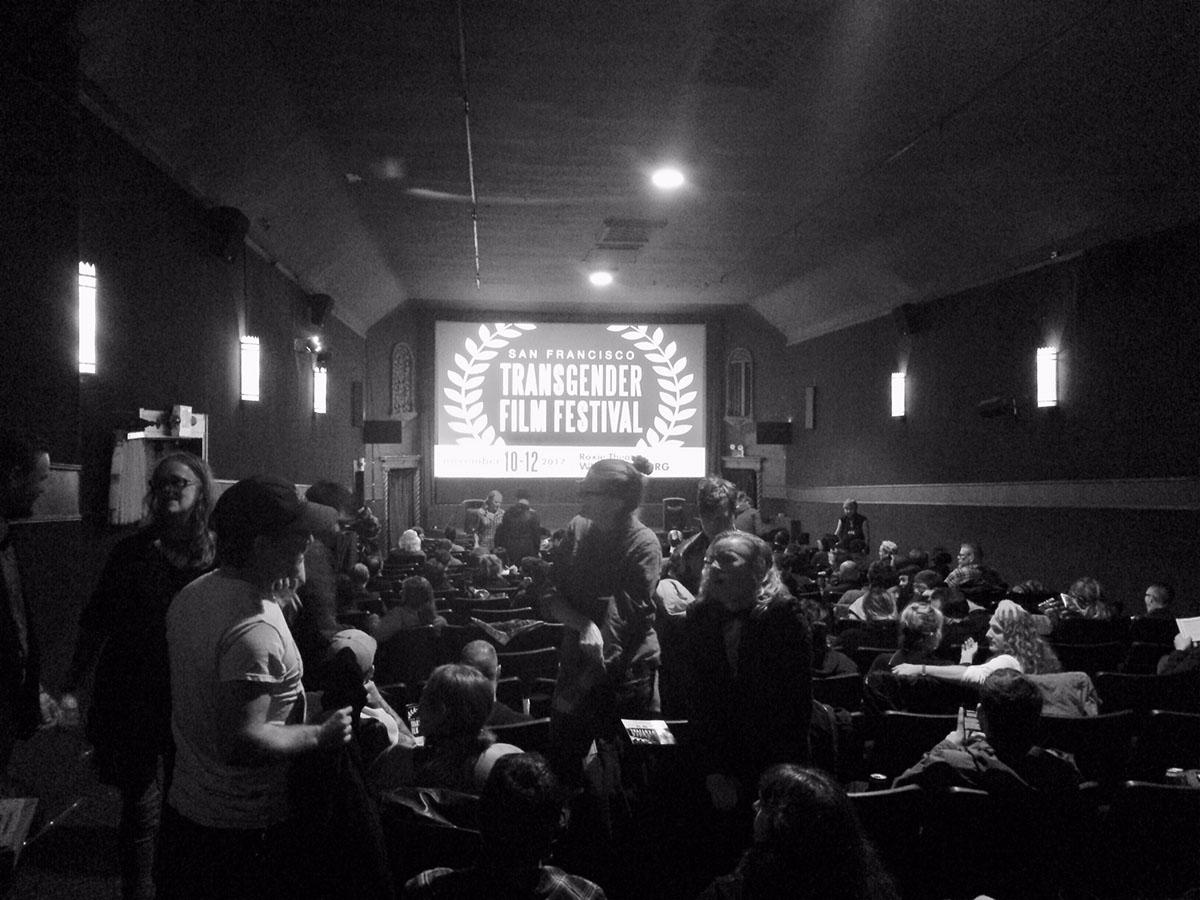
by Andrew Robbins, PhD Candidate, Media Studies, School of Journalism and Communication
With funding from a CSWS Graduate Student Research Grant, I was able to travel to the GLBT Historical Society Archive in San Francisco in November 2018 to explore the unsorted collection of “Tranny Fest,” the original name of what is now known as the San Francisco Transgender Film Festival. The collection was donated by the festival’s original co-founders, media lawyer Alex Austin and late filmmaker Christopher Lee, who started the festival in 1997.
This festival is the primary case study of my dissertation and is the first and longest-running of a growing international niche of transgender film festivals that center cultural production by, for, and about trans and non-binary people. In writing a social history of this festival in which I emphasize the influence it has impressed on local and international trans and non-binary communities, my aim is to write an alternative history. That is, I intend to show how active both trans and non-binary people have been in producing and exhibiting film and video for decades, despite most scholarly research to date focusing predominantly on gay, lesbian, and queer film festivals. Centering this festival as a case study, this research speaks to broader issues about sexual and gender subcultural formations, spatialized histories of colonialism and gentrification, and coalitional activism between racial, ethnic, and sexual minorities, sex workers, immigrants, and anti-capitalist artists, as well as the pervasive influence of neoliberalism and nonprofitization on LGBT artistic endeavors and spaces.
During my trip to San Francisco, I immersed myself in the archive during the day and attended the twenty-first annual festival at night. This served as a metronome to my experience, a walking back and forth on Market Street to touch the past, followed by sinking into a plushy chair at the Roxie Theater on the corner of 16th and Valencia Street in the present. What stitched this temporal movement together was the ongoing encounter with the punk sensibilities and subcultural roots that animated the inception and early years of the festival in the late 1990s and these persistent affects in real time. In the archive, I spent hours watching low-production-value, experimental, multi-genre VHS submissions, thumbed through festival ephemera, photographs of audiences, volunteers, and well known trans activists such as Susan Stryker and Miss Major, read hand-written meeting notes and printed emails between filmmakers, academics, and festival organizers. The overwhelming sense of being there and being with this ephemeral event in multiple temporal dimensions awakened me to a range of the festival’s affects: outrage, opposition, grief, sensuality, and ultimately, trans and non-binary people’s will to survive, to create another world of possibility within dominant cultural formations that seek to erase, invalidate, and vilify those cast as gender outlaws.
Viewing contemporary and historical films in the archive and at the festival revealed the radical roots and political practice this festival has espoused for over twenty years as an event that does not allocate awards or accolades but exudes a punk ethos of Do-It-Yourself (DIY) to inspire audiences to seize the means of production and become their own content creators. Similar to the 1976 issue of the punk-zine, Sideburns, that depicted tablature for guitar chords A, E, G with the captioning: “This is a chord. This is another. This is a third. Now form a band,” the artistic director of the San Francisco Transgender Film Festival, Shawna Virago, encourages audiences to get a camcorder, recruit their friends, and make a movie. This spirit of seizing the material means of production extends to a mandate for different representation. At the festival and in the archive, I watched trans and non-binary characters with intersecting experiences of race, ethnicity, class, gender, ability, and geographic location get to grow up, reflect existentially, laugh, have affirming sex, and perhaps most importantly, to be given screen and spectatorial space to BASH BACK against forms of state, institutional, and social violence.
It is in this spirit of DIY media production that I have been inspired to not only produce a dissertation but to create a short experimental documentary that will preserve memories of this festival and reach a broader audience of people that may not have exposure to anything other than the tyranny of mainstream media. It is also my hope that by preserving video, photographs, and stories taken from interviews with filmmakers, musicians, poets, activists, and audiences, I will contribute to centering a vital moment in one slice of trans history in which a wealth of international trans and non-binary filmmakers actively move past spectacularized narratives of transition, we’re-just-like-you
rhetoric, and tropes of tragedy, farce, and vilification.
—Andrew Robbins is a PhD candidate in Media Studies in the School of Journalism and Communication.

